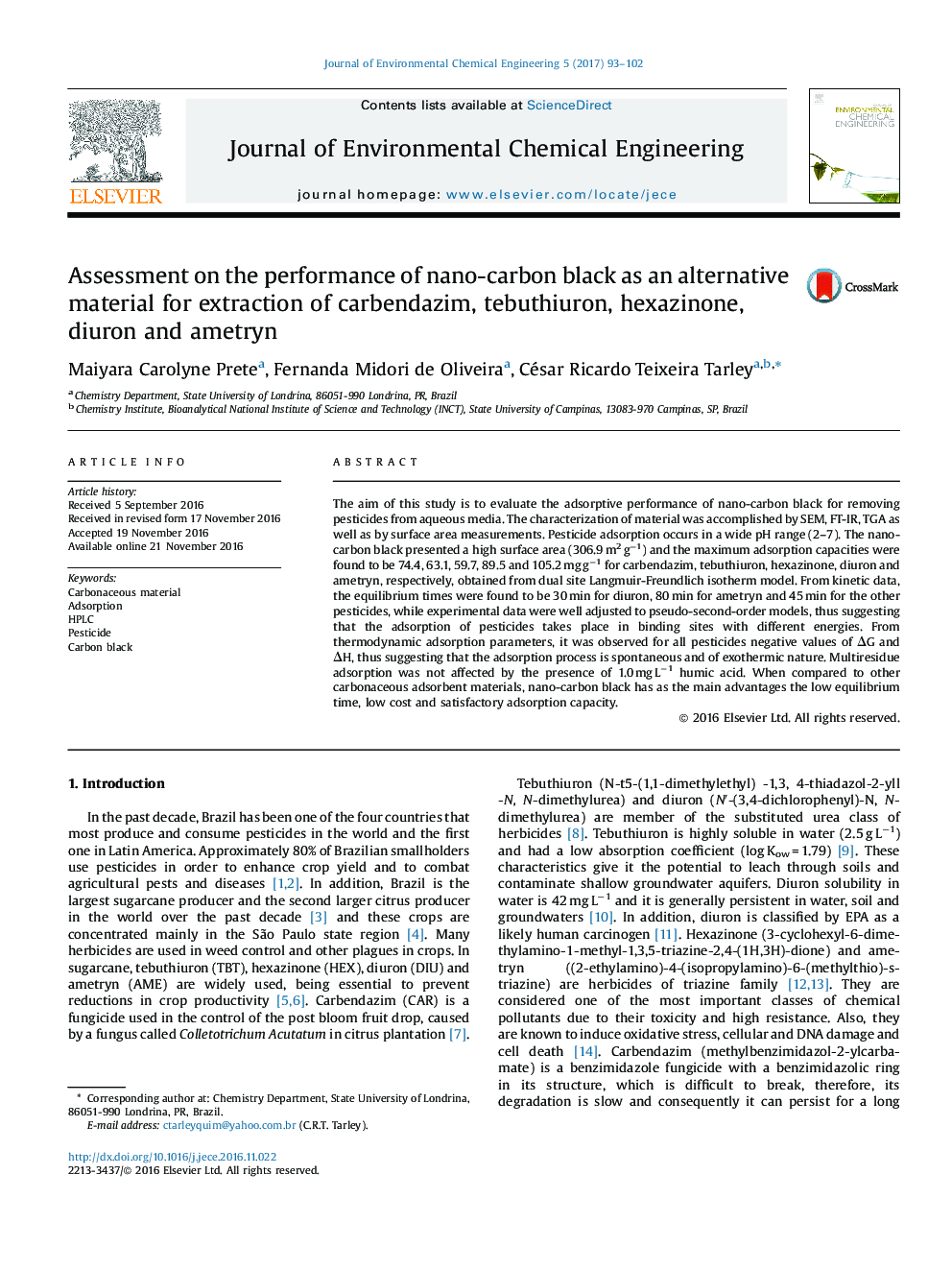| Article ID | Journal | Published Year | Pages | File Type |
|---|---|---|---|---|
| 6477273 | Journal of Environmental Chemical Engineering | 2017 | 10 Pages |
The aim of this study is to evaluate the adsorptive performance of nano-carbon black for removing pesticides from aqueous media. The characterization of material was accomplished by SEM, FT-IR, TGA as well as by surface area measurements. Pesticide adsorption occurs in a wide pH range (2-7). The nano-carbon black presented a high surface area (306.9 m2 gâ1) and the maximum adsorption capacities were found to be 74.4, 63.1, 59.7, 89.5 and 105.2 mg gâ1 for carbendazim, tebuthiuron, hexazinone, diuron and ametryn, respectively, obtained from dual site Langmuir-Freundlich isotherm model. From kinetic data, the equilibrium times were found to be 30 min for diuron, 80 min for ametryn and 45 min for the other pesticides, while experimental data were well adjusted to pseudo-second-order models, thus suggesting that the adsorption of pesticides takes place in binding sites with different energies. From thermodynamic adsorption parameters, it was observed for all pesticides negative values of ÎG and ÎH, thus suggesting that the adsorption process is spontaneous and of exothermic nature. Multiresidue adsorption was not affected by the presence of 1.0 mg Lâ1 humic acid. When compared to other carbonaceous adsorbent materials, nano-carbon black has as the main advantages the low equilibrium time, low cost and satisfactory adsorption capacity.
